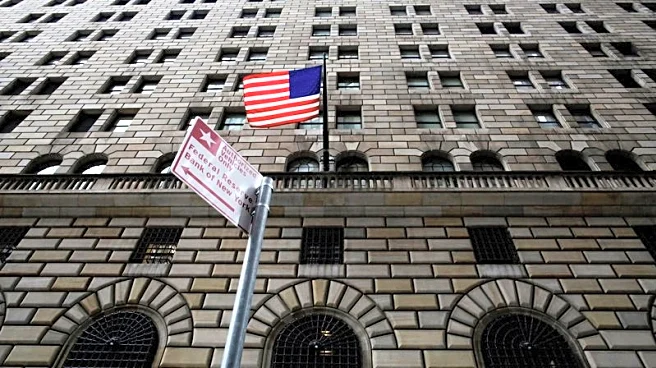What's Happening?
A recent report by BroadbandNow highlights significant improvements in broadband infrastructure deployment across the United States. However, the report warns of a 'devastating affordability gap' that continues to leave millions of rural Americans disconnected despite the availability of service. The affordability gap is defined as the difference between the physical availability of broadband and access to reasonably priced plans, which BroadbandNow considers to be those costing less than $60 per month. The report identifies five states with a gap of over 20%, including Alaska, North Dakota, South Dakota, Montana, and Wyoming. Despite infrastructure being available, pricing remains a barrier, particularly in Alaska where 74% of residents have access to broadband infrastructure but only 0.2% can afford the plans.
Why It's Important?
The persistence of the affordability gap in broadband access has significant implications for rural communities in the U.S. It challenges the notion that infrastructure alone can bridge the digital divide, highlighting the need for policy interventions to ensure affordable access. The gap affects economic opportunities, educational access, and healthcare services, which increasingly rely on internet connectivity. The report suggests policy measures such as reviving subsidies like the Affordable Connectivity Program and implementing price caps in monopoly markets. These measures are crucial for ensuring that rural and low-income households can benefit from digital services, thereby promoting equitable access to information and resources.
What's Next?
The report's findings may prompt renewed discussions among policymakers and industry stakeholders about addressing the affordability gap. Potential next steps could include legislative efforts to revive funding for programs like the Affordable Connectivity Program, which previously aimed to subsidize broadband costs for low-income households. Additionally, there may be advocacy for regulatory changes to enforce affordable tier offerings as a condition for infrastructure grants. The Trump administration's revisions to the Broadband Equity Access and Deployment program, which prevent states from setting low-cost thresholds, could face scrutiny and calls for reversal.
Beyond the Headlines
The affordability gap in broadband access raises broader ethical and social questions about digital equity and the role of government in ensuring access to essential services. It underscores the need for a comprehensive approach that considers both infrastructure and pricing to achieve true digital inclusion. The report's findings may also influence future debates on the balance between market-driven solutions and government intervention in the telecommunications sector.













